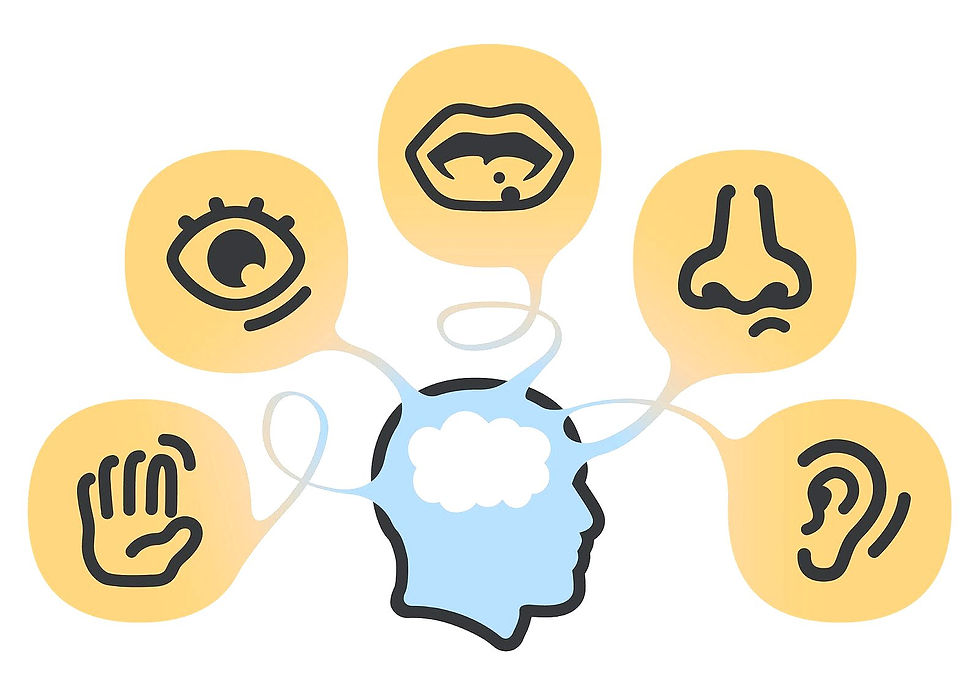The Five Senses...and the Other Five!
- clearautism

- Nov 19, 2020
- 3 min read

In this article I would like to briefly explain sensory sensitivities and their effects in relation to autism.
We are used to the idea of the “five senses” – visual (sight), auditive (hearing), tactile (touch), olfactory (smell) and gustative (taste), and most people will have experienced sensory discomfort at some point in their lives. These senses can be grouped under the heading of Exteroception, the senses used to perceive our external environment.
Most of us can and do experience sensitivity in any of our senses, even on a temporary basis, and I’m sure you can think of instances in your own life when this has happened to you.
If you are old enough (as I am) to have been at school when classrooms had blackboards, you may have had a teacher who took a kind of fiendish pleasure in scraping their nails down the board – and who relished the resulting howls of complaint from their suffering students. Maybe you were one of the students covering their ears in dismay.
Have you ever found someone’s perfume almost unbearably strong? Squinted in bright sunlight? Drunk some unexpectedly bitter coffee?
Or perhaps you have had one of those woolly winter sweaters that is wildly irritating to any piece of exposed skin it happens to touch – forcing you to choose between being either really itchy or really cold.

If you have had experiences like this, it is not such a leap to understand that a person might experience a higher or lower degree of sensitivity in one or more of these faculties on a more persistent basis. This obviously has implications not only for how autistic people perceive the world around them but also how the world (including non-autistic people) perceives them. Furthermore, the communication differences associated with autism can impede a person's ability to explain or even identify the source of their discomfort.
The impact of sensory sensitivities should be carefully considered when addressing a distress reaction, sometimes described as “challenging behaviour”. They are often a major contributor to ‘meltdowns’ or ‘shutdowns’, to the point where these would be far more accurately referred to as sensory and/or emotional overwhelm. Focusing on reducing or eliminating sensory input where possible can go a long way to reducing an autistic person’s anxiety and de-escalating a difficult situation.
Sensitivity, of course, does not only refer to hypersensitivity, or a high degree of susceptibility to sensory input. We can also be hyposensitive – having a lower than expected reaction to our environment.

This is especially true of the “Other Five” senses –
o Proprioception: the perception of body movement and position
o Vestibular: the perception of balance
o Thermoception: the perception of temperature
o Nociception: the perception of pain, and
o Interoception: the perception of the body’s internal state
Interoception needs an article all to itself, but the main thing we need to bear in mind is that for autistic people, these senses can also oscillate between extremes of sensitivity, and this rollercoaster can also be affected by external factors such as baseline anxiety, noise level, demand intensity etc.
In summary, it is crucial to recognise to what degree the sensory context can influence an autistic person’s stress level, and how environmental accommodations – or better still, the possibility of self-regulation, i.e. allowing someone to manage their own environment - is key to an autistic person’s well-being.



Comments